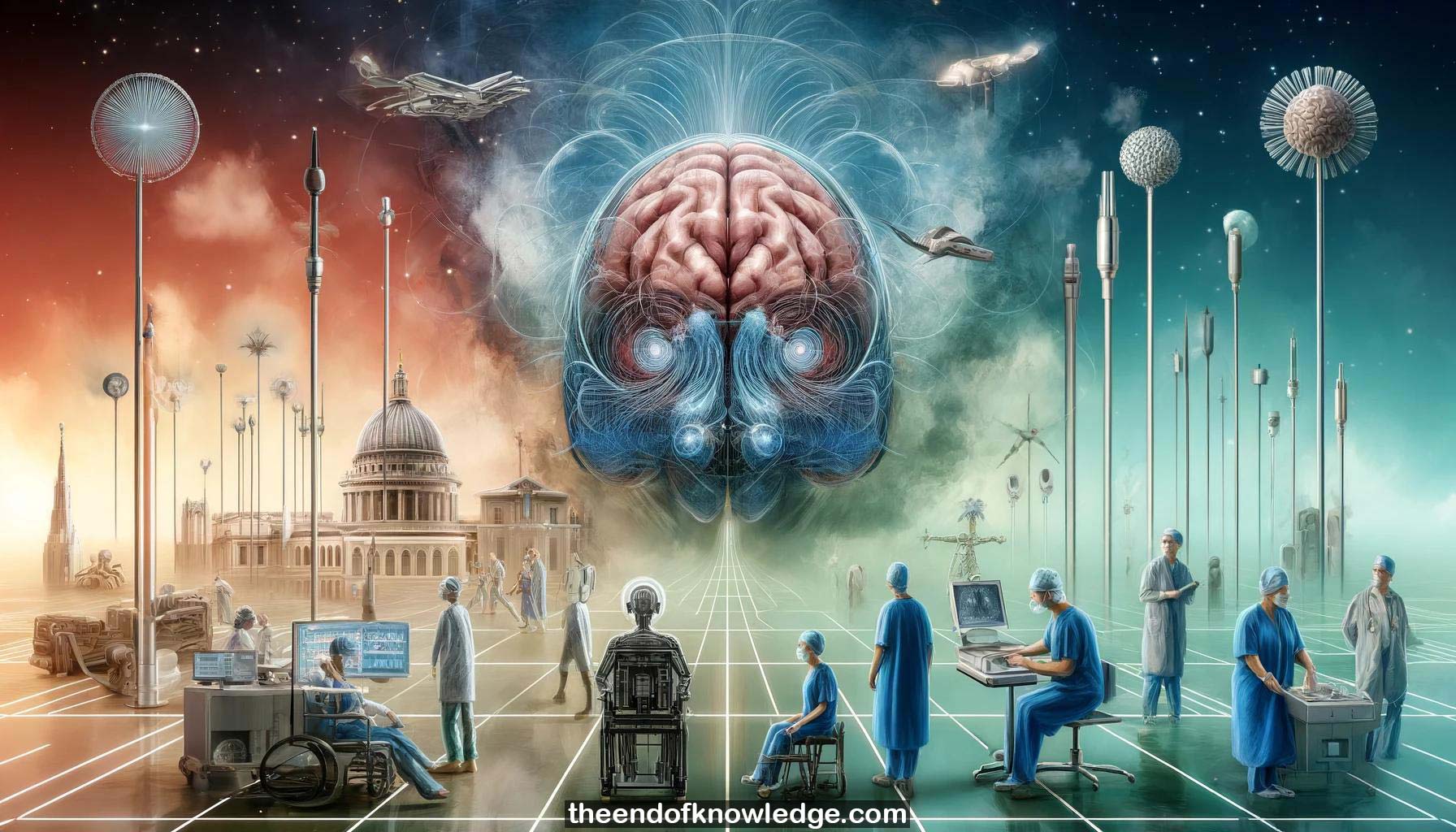 >
>
Concept Graph & Resume using Claude 3 Opus | Chat GPT4 | Llama 3:
Resume:
1.- Peter Brunner discusses characterizing and modifying cortical processes to map brain function, mainly to guide surgical resections in epilepsy patients.
2.- Two fundamental approaches are electrocorticography (ECoG) with electrode sheets on brain surface and stereo EEG with depth electrodes, which is gaining popularity.
3.- The research is highly interdisciplinary, involving neurosurgery, neuroimaging, experiment design, signal processing, computational neuroscience and broader neuroscience perspectives.
4.- It provides a unique opportunity to work with patients and immediately see outcomes, both in the operating room and at the bedside.
5.- Electrical brain stimulation is used clinically to map critical functions like motor, speech and visual areas prior to epilepsy surgeries.
6.- However, electrical stimulation mapping has limitations - it requires extensive testing, can be non-specific, and risks triggering afterdischarges and seizures.
7.- As an alternative, passive ECoG mapping utilizes low and high frequency oscillations, especially high gamma activity, as indicators of cortical activation.
8.- The clinical vision was a real-time ECoG mapping system that cues subjects to perform actions, records and analyzes signals, and guides surgeons.
9.- Developing the system required electrode localization, software for real-time experiments and analysis, and visualization fusing function with underlying brain anatomy.
10.- Examples demonstrate rapid mapping of hand, tongue, lip, and auditory cortex activation in just 1-2 minutes of ECoG recording.
11.- Extensive engineering was needed to decompose signals into frequency components, extract high gamma activity, and detect cortical activation onset.
12.- Results from adults and children show strong concordance between ECoG high gamma mapping and electrical stimulation, with some greater sensitivity.
13.- Broca's expressive speech area could be mapped with ECoG under anesthesia by analyzing initial cortical responses to receptive language stimuli.
14.- ECoG mapping has been validated across scales from macro to micro grids and shows consistency with fMRI language mapping.
15.- Transitioning ECoG mapping to clinical use required securing IP, designing clinical trials, engineering a device, and navigating FDA approval.
16.- Stimulation artifacts during recordings pose challenges and require special processing to remove without filtering out relevant neural signals.
17.- Novel approaches track gamma activation onsets across trials despite timing variability to reveal underlying oscillatory coupling and information flow.
18.- By titrating acoustic stimuli to perceptual thresholds, ECoG can reveal neural activity governing variable perceptual decisions.
19.- Temporally precise ECoG responses to different categories of acoustic stimuli (speech, music, environmental sounds) reveal distinct spatiotemporal activation patterns.
20.- ECoG also captures predictive responses to expected but omitted stimuli in a regular sequence, activating specific cortical regions.
21.- Electrical stimulation itself can be used to probe functional connectivity by inducing gamma activity and observing its propagation.
22.- Applying spatial and temporal filtering to remove stimulation artifacts allows tracking the spread of induced gamma oscillations.
23.- The early and late components of the cortical stimulation response, the CCEP and gamma echo, reveal different connectivity profiles.
24.- Convergence between ECoG responses to acoustic stimuli and cortical stimulation further supports the mapping of functional language networks.
25.- Single pulse electrical stimulation delivered through depth electrodes and recorded with scalp EEG helps localize subcortical DBS targets.
26.- Stimulation evoked potentials also guide positioning within small subcortical nuclei like the GPi for movement disorders.
27.- SEEG with depth electrodes is increasingly used over ECoG grids as it causes less morbidity while mapping wider brain networks.
28.- However, ECoG has limitations in spatial resolution, coverage of sulci and deeper layers compared to the columnar and laminar organization of cortex.
29.- Future directions include more outcome-based intraoperative and chronic studies and further integration of stimulation with passive ECoG mapping.
30.- In conclusion, ECoG mapping provides concordant results to electrical stimulation and can be used intraoperatively with and without patient participation.
Knowledge Vault built byDavid Vivancos 2024